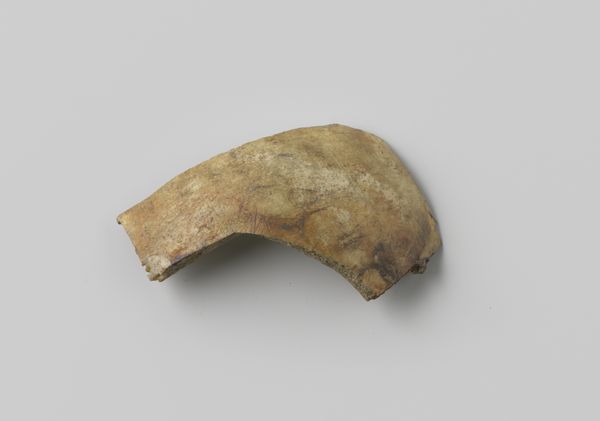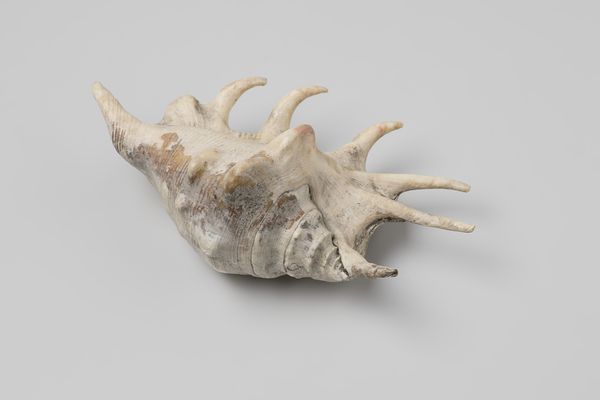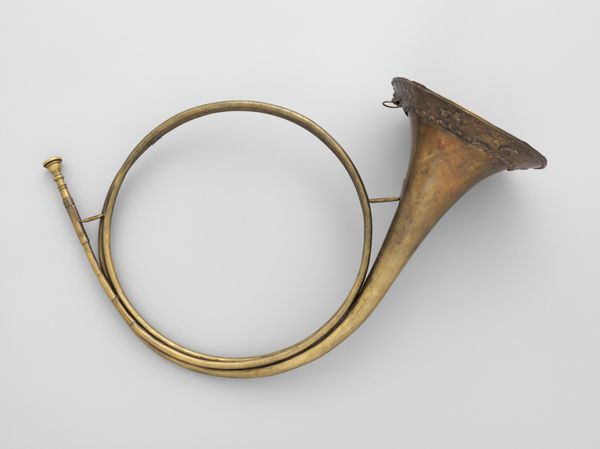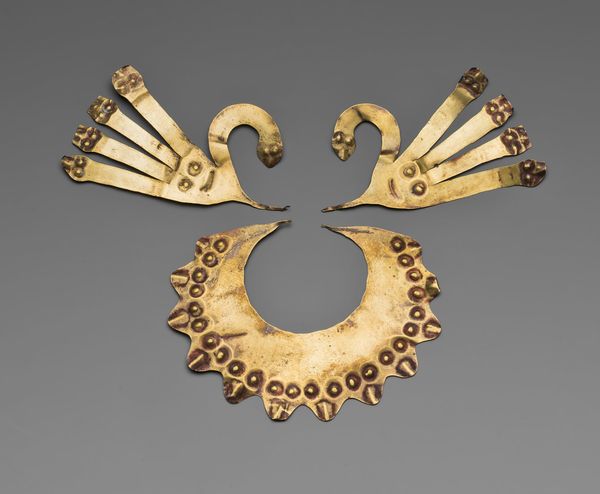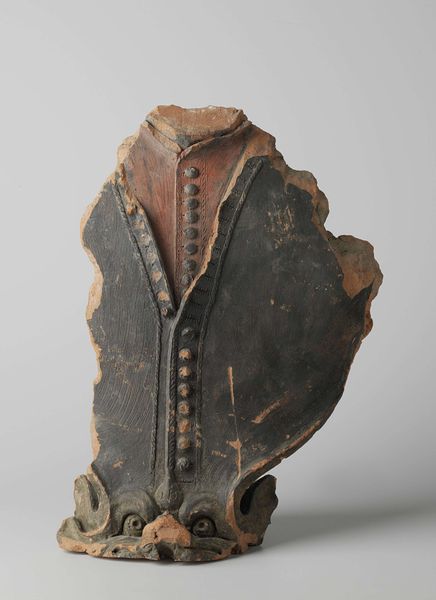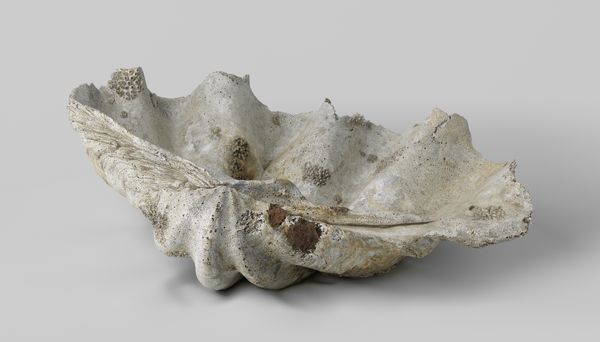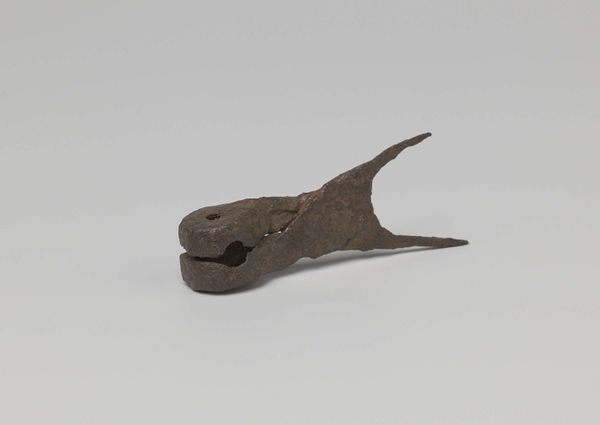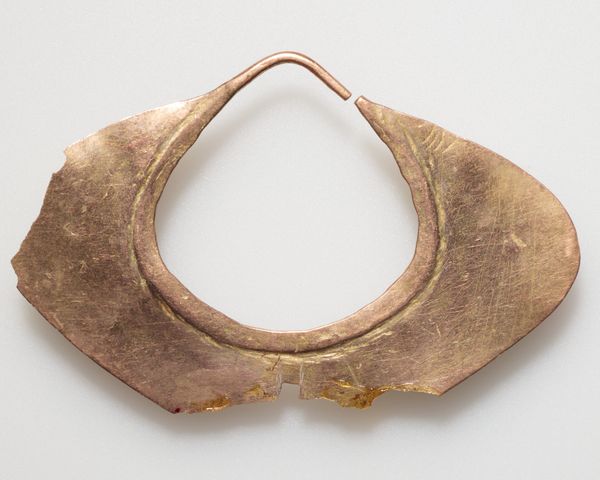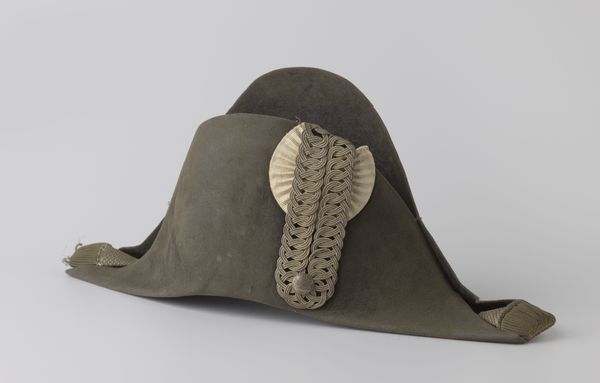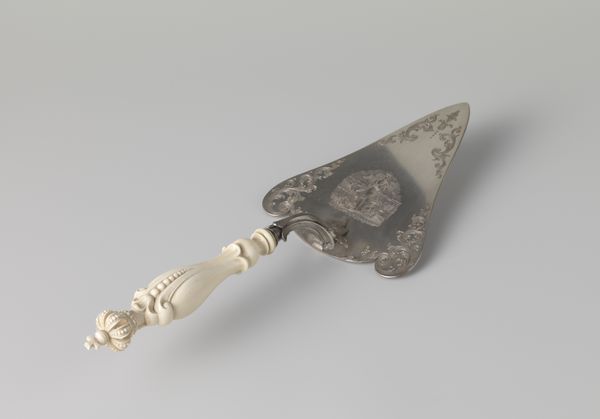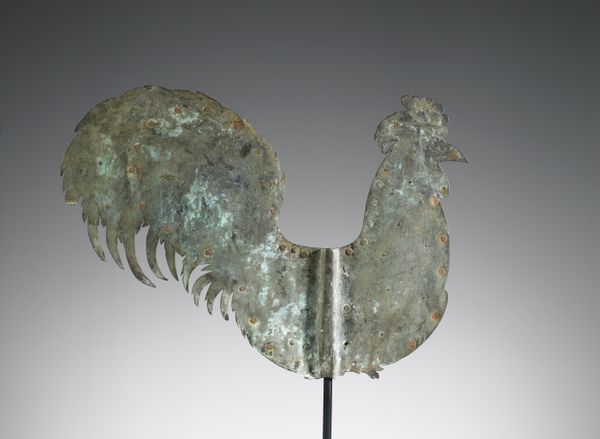
carving, relief
#
medieval
#
carving
#
relief
Dimensions: height 79 cm, width 52 cm
Copyright: Rijks Museum: Open Domain
Editor: Here we have what's described as an Ornamental shield made from an elk’s antler, dating from around the 11th or 12th century. It’s currently held in the Rijksmuseum collection. I'm struck by how meticulously this piece is carved. What does this object communicate to you? Curator: It speaks volumes about status and cultural exchange in the medieval period. The transformation of a utilitarian object, an antler, into a decorated shield points towards a society that valued artistry. We must consider who had the power to commission and own such an object. Was it purely decorative, or did it carry symbolic weight? Editor: Symbolic weight in what sense? Curator: Perhaps linked to the elk itself – its strength, its place in mythology. We need to delve into the belief systems of the time. Notice also how the ornamentation resembles design motifs of that period, suggesting the patron was aware of contemporary artistic trends, which further speaks to wealth and status. Was this a unique creation or part of a broader artistic tradition? Editor: Good question. I wonder about the Indigenous connections mentioned in the notes. Could that shed light on whether it fits within existing artistic traditions or fills a novel niche? Curator: Exactly. That adds another layer to its history – did the maker indigenously use carving techniques specific to that society or blend a range of traditions to produce an impactful decorative item? Considering the time period, trade and contact, though perhaps limited, did occur. Editor: So it's less about the antler itself and more about what it represented culturally and how those concepts impacted its production? Curator: Precisely! The artistry suggests complex social and political dynamics shaping its creation and subsequent interpretation. It invites us to rethink simple classifications and appreciate objects as products of interwoven cultural forces. Editor: Fascinating. I initially saw the skill involved but I missed its story about the societies that shaped it.
Comments
rijksmuseum about 2 years ago
⋮
According to a local tradition this ornamental shield comes from the mortuary chapel of the Emperor Louis the Pious at Metz. Louis was the son and successor of Charlemagne. Although it has been called ‘Charlemagne’s shield’, it was probably made and hung in the chapel several centuries after Louis’s death.
Join the conversation
Join millions of artists and users on Artera today and experience the ultimate creative platform.
